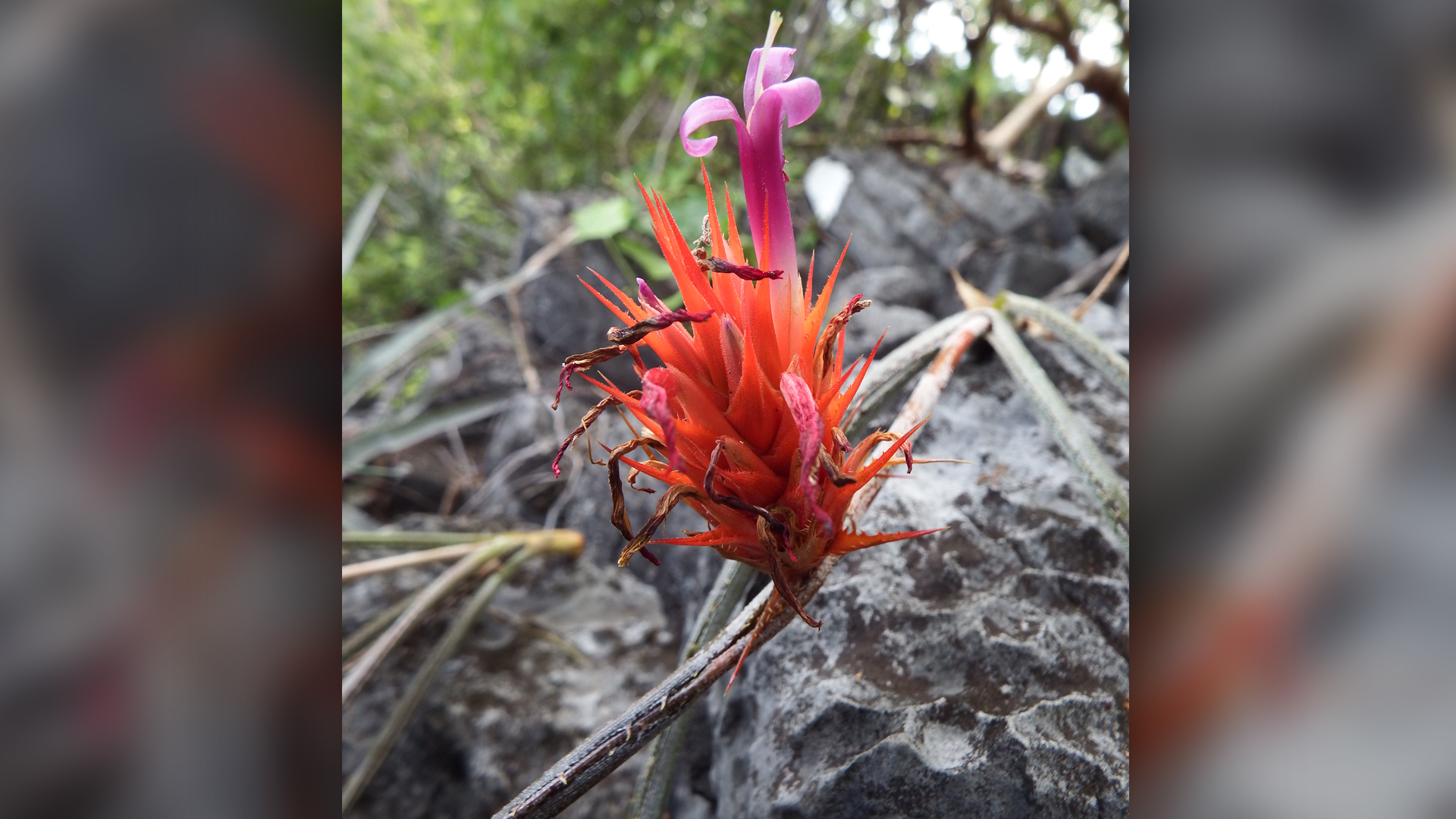World's ugliest orchid looks like a soul-sucking, eyeless worm
Hello, gorgeous.

Orchids are usually prized for their grace and loveliness, but a newly described species from Madagascar probably won't be winning any beauty contests. Its small flowers are a mottled brown, and it resembles a moldy paper bag (or maybe an eyeless, wormlike head with a mouth gaping in a silent scream or to consume your soul).
It's no wonder that the newfound species has been called "the ugliest orchid in the world" by the Royal Botanical Gardens, Kew (RBG Kew) in the United Kingdom, which recently placed the homely newcomer at the top of a list highlighting species discovered in 2020, representatives said in a statement.
The leafless orchid, named Gastrodia agnicellus, grows underground in decaying leaf litter for most of its life cycle, and is nourished by fungus. In addition to the "small, brown and rather ugly" orchid, researchers and collaborators with RBG Kew described more than 150 plants and fungi this year, according to the statement.
Related: 5 surprising facts about orchids
In 2019, British botanist Johan Hermans, an RBG Kew honorary research associate, found a number of G. agnicellus orchids hiding under leaf litter in a humid Madagascar forest. Their lumpy, oblong shapes hinted that the flower belonged to a group known as potato orchids, and the blooms, which measure about 0.4 inches (1.1 centimeters) in length, emit a "noticeable musk rose-like scent" that intensifies when air temperatures are warmer, Hermans wrote in a study published Nov. 5 in the journal Curtis's Botanical Magazine.
Other newly described species on the list include a scaly, heat-resistant shrub that thrives in Namibian salt pans (Tiganophyton karasense); a Peruvian plant with purple tubers that could be a new food crop (Ipomoea noemana); and a vibrant, colorful bromeliad — a family of tropical, flowering plants that includes the pineapple — from Brazil (Acanthostachys calcicola) that grows on limestone cliffs and may be pollinated by hummingbirds, according to the statement.

"In a challenging and difficult year, it's so thrilling to see botanical and mycological science continue, with a bumper list of incredible newly named species being documented with our collaborators across the world," said Martin Cheek, an RBG Kew botanist and senior scientist within the Identification and Naming department.
Sign up for the Live Science daily newsletter now
Get the world’s most fascinating discoveries delivered straight to your inbox.
"However, the bleak reality facing us cannot be underplayed: With two in five plants threatened with extinction, it is a race against time to find, identify, name and conserve plants before they disappear," Cheek said.
Originally published on Live Science.

Mindy Weisberger is an editor at Scholastic and a former Live Science channel editor and senior writer. She has reported on general science, covering climate change, paleontology, biology and space. Mindy studied film at Columbia University; prior to Live Science she produced, wrote and directed media for the American Museum of Natural History in New York City. Her videos about dinosaurs, astrophysics, biodiversity and evolution appear in museums and science centers worldwide, earning awards such as the CINE Golden Eagle and the Communicator Award of Excellence. Her writing has also appeared in Scientific American, The Washington Post and How It Works Magazine. Her book "Rise of the Zombie Bugs: The Surprising Science of Parasitic Mind Control" will be published in spring 2025 by Johns Hopkins University Press.










